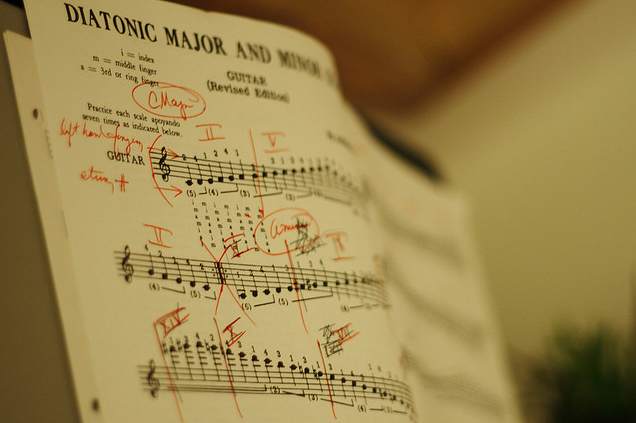Today I’ll show you the two most important scales in western music. The “Major Scale” and the “Pentatonic Scale”. If they are not in your vocubalary yet, be eager to learn. If you know your scales you can learn how to solo, improvise and much more. We’ll start with…
The Major Scale.
The major scale is the mother of all scales, because all the other scales, modes, intervals, chords and harmony in western music can be derived from it. If you want to learn anything about music theory you need to know how to play the major scale.
And why would you want to learn music theory? Because you’ll be much faster in learning to understand everything about guitar playing. Yes you’ll become a better rock, blues, metal, country, jazz guitar player. If you know music theory you know the short cuts to playing and transcribing guitar solos, chord progressions and improvising. It makes the life of a guitar player a lot easier.
Continue Reading

